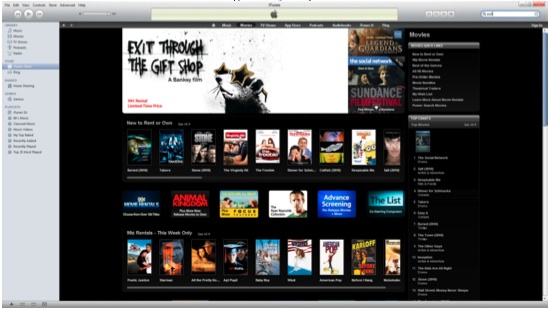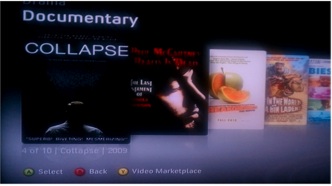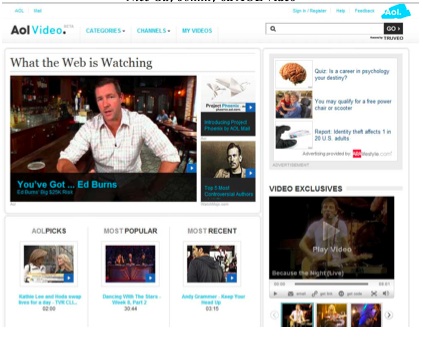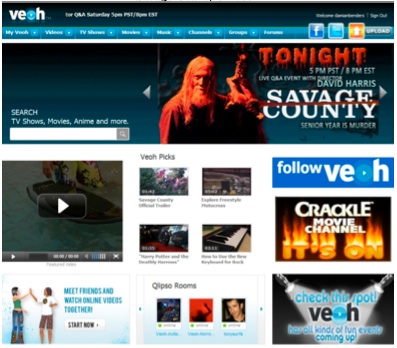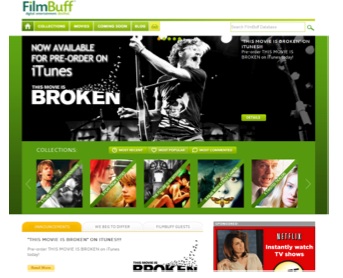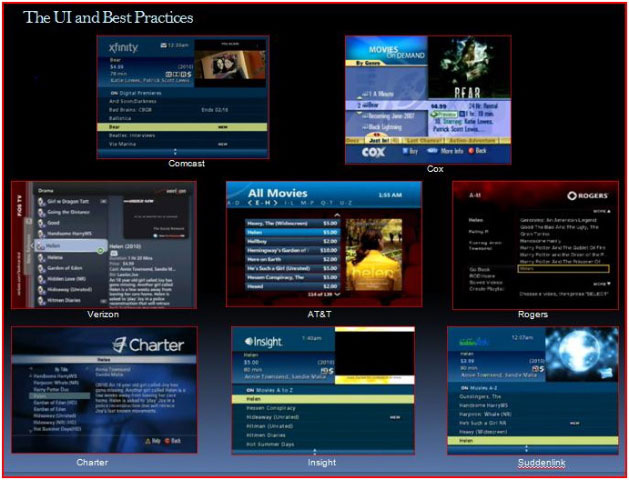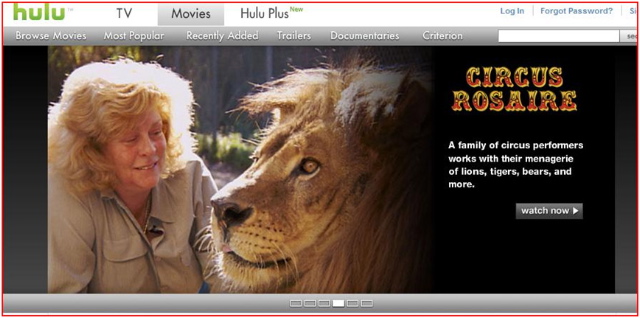
Sneak Peek #4: Carpe Diem for Indie Filmmakers in the Digital/VOD Sector
In this final excerpt from our upcoming edition of Selling Your Film Outside the U.S., Wendy Bernfeld of Amsterdam-based consultancy Rights Stuff talks about the current situation in Europe for independent film in the digital on demand landscape.
There have been many European platforms operating in the digital VOD space for the last 8 years or so, but recent changes to their consumer pricing structures and offerings that now include smaller foreign films, genre films and special interest fare as well as episodic content have contributed to robust growth. European consumers are now embracing transactional and subscription services , and in some cases ad-supported services, in addition to free TV, DVD and theatrical films. Many new services are being added to traditional broadcasters’ offerings and completely new companies have sprung up to take advantage of burgeoning consumer appetite for entertainment viewable anywhere, anytime and through any device they choose.
From Wendy Bernfeld’s chapter in the forthcoming Selling Your Film Outside the U.S.:
Snapshot
For the first decade or so of the dozen years that I’ve been working an agent, buyer, and seller in the international digital pay and VOD sector, few of the players, whether rights holders or platforms, actually made any serious money from VOD, and over the years, many platforms came and went.
However, the tables have turned significantly, and particularly for certain types of films such as mainstream theatrical features, TV shows and kids programming, VOD has been strengthening, first in English-language mainstream markets such as the United States, then in the United Kingdom, and now more recently across Europe and other foreign language international territories. While traditional revenues (eg DVD,) have dropped generally as much as 20% – 30%, VOD revenues—from cable, telecom, IPTV, etc.—have been growing, and, depending on the film and the circumstances, have sometimes not only filled that revenue gap, but exceeded it.
For smaller art house, festival, niche, or indie films, particularly overseas, though, VOD has not yet become as remunerative. This is gradually improving now in 2014 in Europe, but for these special gems, more effort for relatively less money is still required, particularly when the films do not have a recognizable/strong cast, major festival acclaim, or other wide exposure or marketing.
What type of film works and why?
Generally speaking, the telecoms and larger mainstream platforms prioritize mainstream films in English or in their local language. In Nordic and Benelux countries, and sometimes in France, platforms will accept subtitled versions, while others (like Germany, Spain, Italy, and Brazil) require local language dubs. However, some platforms, like Viewster, will accept films in English without dubbed or subtitled localized versions, and that becomes part of the deal-making process as well. This is the case, particularly for art house and festival films, where audiences are not surprised to see films in English without the availability of a localized version.
Of course, when approaching platforms in specific regions that buy indie, art house, and festival films, it is important to remember that they do tend to prioritize films in their own local language and by local filmmakers first. However, where there is no theatrical, TV exposure, or stars, but significant international festival acclaim, such as SXSW, IDFA, Berlinale, Sundance, or Tribeca, there is more appetite. We’ve also found that selling a thematic package or branded bundle under the brand of a festival, like IDFA, with whom we have worked (such as “Best of IDFA”) makes it more recognizable to consumers than the individual one-off films.
What does well: Younger (i.e., hip), drama, satire, action, futuristic, family and sci-fi themes tend to travel well, along with strong, universal, human-interest-themed docs that are faster-paced in style (like Occupy Wall Street, economic crisis, and environmental themes), rather than traditionally educational docs or those with a very local slant.
What does less well: World cinema or art house that is a bit too slow-moving or obscure, which usually finds more of a home in festival cinema environments or public TV than on commercial paid VOD services, as well as language/culture-specific humor, will not travel as well to VOD platforms.
Keep in mind that docs are widely represented in European free television, so it’s trickier to monetize one-offs in that sector, particularly on a pay-per-view basis. While SVOD or AVOD offerings (such as the European equivalents of Snagfilm.com in the US) do have some appetite, monetization is trickier, especially in the smaller, non-English regions. Very niche films such as horror, LGBTQ, etc. have their fan-based niche sites, and will be prominently positioned instead of buried there, but monetization is also more challenging for these niche films than for films whose topics are more generic, such as conspiracy, rom-com, thrillers, kids and sci-fi, which travel more easily, even in the art house sector.
However, platforms evolve, as do genres and trends in buying. Things go in waves. For example, some online platforms that were heavily active in buying indie and art house film have, at least for now, stocked up on feature films and docs. They are turning their sights to TV series in order to attract return audiences (hooked on sequential storytelling), justify continued monthly SVOD fees, and /or increase AVOD returns.
Attitude Shifts
One plus these days is that conventional film platform buyers can no longer sit back with the same historic attitudes to buying or pricing as before, as they’re no longer the “only game in town” and have to be more open in their programming and buying practices. But not only the platforms have to shift their attitude.
To really see the growth in audiences and revenues in the coming year or two, filmmakers (if dealing direct) and/or their representatives (sales agents, distributors, agents) must act quickly, and start to work together where possible, to seize timing opportunities, particularly around certain countries where VOD activities are heating up. Moreover, since non-exclusive VOD revenues are cumulative and incremental, they should also take the time to balance their strategies with traditional media buys, to build relationships, construct a longer-term pipeline, and maintain realistic revenue expectations.
This may require new approaches and initiatives, drawing on DIY and shared hybrid distribution, for example, when the traditional sales agent or distributor is not as well-versed in all the digital sector, but very strong in the other media—and vice versa. Joining forces, sharing rights, or at least activities and commissions is a great route to maximize potential for all concerned. One of our mantras here at Rights Stuff is “100% of nothing is nothing.” Rights holders sitting on the rights and not exploiting them fully do not put money in your pockets or theirs, or new audiences in front of your films.
Thus, new filmmaker roles are increasingly important. Instead of sitting back or abdicating to third parties, we find the more successful filmmakers and sales reps in VOD have to be quite active in social media marketing, audience engagement, and helping fans find their films once deals are done.
To learn more about the all the new service offerings available in Europe to the savvy producer or sales agent, read Wendy’s entire chapter in the new edition of Selling Your Film Outside the US when it is released later this month. If you haven’t read our previous edition of Selling Your Film, you can find it HERE.
Sheri Candler May 15th, 2014
Posted In: book, Digital Distribution, Distribution, International Sales
Tags: attitude shift, AVOD, digital film distribution, dubbing, Europe, Rights Stuff, self distribution, Selling Your Film Outside the U.S., subtitling, SVOD, VOD, Wendy Bernfeld
Resetting expectations when distributing an indie film
This week’s member story focuses on how TFC helps filmmakers who request our consultation on their release. Director John Chi will also write a further guest post that goes into more detail about how his first feature film Tentacle 8 was released, but today he talks about how he discovered our organization and, through consultation with us, changed what he thought about distribution success.
At what stage in the production process was TFC consulted?
JC: “Three months after we wrapped production, we had a very solid cut of the film and we were ready to start showing it to people. Casey Poh, one of our producers, immediately suggested we reach out to TFC and get their thoughts. Casey had previously met Orly Ravid when he was working at Outfest, and later approached her to serve as a consultant for his Stark Producing Graduate Thesis Project at USC.
We contacted TFC and Co-Executive Director, Jeffrey Winter, was kind enough to watch our film, and give us his thoughts. He flatly stated that we weren’t a festival film, that our subject matter wasn’t mainstream enough to be programmed, and beyond that, it was going to be a very challenging film to market. This wasn’t the reaction we expected. We heard and respected Jeffrey’s comments, but we also wanted to proceed as planned. So we signed with Glen Reynolds at Circus Road Films to act as our sales representative, and began submitting to all the major film festivals.”
Did the premiere lead to any sales interest? Did you have a plan for distributing the film?
JC: “TENTACLE 8 submitted to all the major acquisition festivals (Cannes, Sundance, Toronto, SXSW, and Tribeca) and many of the other premier festivals (Slamdance, LAFF, and Seattle International), but we didn’t get into any of them. After nearly a year of futility, we accepted that Jeffrey Winter was right, and that we weren’t a good fit for festivals. We decided to go directly to distributors via our sales agent, and two months later, we received a few offers for domestic DVD and VOD/Digital Distribution.”
What advice was sought from TFC and what ultimately happened with the release of the film?
JC: “When we realized we weren’t going to get into a major festival, we contacted TFC again to explore our distribution options. The first thing we did was scour the TFC archives to read everything we could on traditional distribution, DIY distribution, and compared the pros and cons of the two approaches, incorporating any processes that were relevant to us.
I then had a thirty minute conversation with TFC founder Orly Ravid about our prospects. She very succinctly explained that our film wasn’t mainstream enough for any distributor to really go out on a limb for us. We could bypass traditional distribution and go with a DIY approach, but we’d need to put in a lot of additional time, energy, and money with no guarantees of success; OR we could sign on with one of the traditional distributors and manage/lower our expectations. She cautioned, however, that no distributor was going to spend a lot of money or energy marketing the movie. At the time, I didn’t fully understand the importance of that warning; I just wanted to move forward.
The final decision to sign with Grand Entertainment Group, was based mainly on their long history and experience in the home entertainment business. We determined that there was just no way to get a cable tv deal or get our DVDs onto store shelves at Walmart and Best Buy without their help and prior relationships.”
Where can the film be seen now?
JC: “Our DVD was released on March 18, 2014 and sold out our initial shipments at Walmart, Best Buy, and Amazon within the first 8 days of release. 8 is our lucky number!
IMDB also put us on a list of Most Popular Independent Feature Films released in 2014, based on their movie meter rankings. Pretty incredible considering we had very little press and publicity prior to our DVD release. It was based almost entirely on our small, but very loyal and dedicated base that we grew completely organically. While we are very grateful to be on any list of success stories, there are probably thousands of independents released each year that never see the light of day, which is incredibly unjust and unfair because we might have been one of those films had the ball bounced a little differently.
Our VOD/Digital release will be sometime in April or May, and we’re partnering with Tugg, Inc. to have some promotional theatrical events in Los Angeles, Washington D.C., and possibly San Francisco. I ultimately realized that no one was more responsible and obligated to market and promote the film than me, the producer/director/writer of the movie. I don’t think I would have truly understood that, if someone else had been doing it for us. We never could have harnessed and cultivated the same level of ownership our audience has with the film, if we didn’t do it the old fashioned way, by personally reaching out one person at a time. It’s really hard work, but I know we’re much stronger because of it.”
To find out more about Tentacle 8, visit these websites:
IMDB: http://www.imdb.com/title/tt2048875/
Tugg: http://www.tugg.com/titles/tentacle-8
Facebook: www.facebook.com/tentacle8
Webpage: www.tentacle8.com
Twitter: www.twitter.com/tentacle8
Amazon: http://www.amazon.com/Tentacle-8-Brett-Rickaby/dp/B00H7LRY5E
Sheri Candler April 9th, 2014
Posted In: Best Buy, case studies, Digital Distribution, Distribution, DIY, Film Festivals
Tags: Casey Poh, Circus Road Films, DIY, DVD sales, Glen Reynolds, Gran Entertainment Group, Jeffrey Winter, John Chi, Orly Ravid, self distribution, Tentacle 8, The Film Collaborative
Indie Game: a distribution case study
This article first appeared on the Sundance Artist Services blog on August 13, 2012
written by Bryan Glick with assistance from Sheri Candler and Orly Ravid
Indie Game: The Movie has quickly developed a name not just as a must-see documentary but also as a film pioneer in the world of distribution. Recently, I had a Skype chat with Co-directors James Swirsky and Lisanne Pajot . The documentary darlings talked about their indie film and its truly indie journey to audiences.
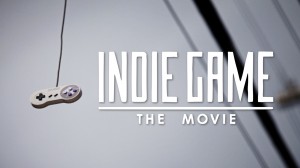 Swirsky and Pajot did corporate commercial work together for five years and that eventually blossomed into doing their first feature. “We thought it would take one year, but it ended up taking two. I can’t imagine working another way, we have a wonderful overlapping and complimentary skill set, ” said Pajot. “We both edited this film, we both shot this film. It creates this really fluid organic way of working. It’s kind of the result of 5 or 6 years of working together. I don’t think you could get a two person team doing an independent film working like we did on day one. It’s stressful at times but the benefits are absolutely fantastic, ” said Swirsky.
Swirsky and Pajot did corporate commercial work together for five years and that eventually blossomed into doing their first feature. “We thought it would take one year, but it ended up taking two. I can’t imagine working another way, we have a wonderful overlapping and complimentary skill set, ” said Pajot. “We both edited this film, we both shot this film. It creates this really fluid organic way of working. It’s kind of the result of 5 or 6 years of working together. I don’t think you could get a two person team doing an independent film working like we did on day one. It’s stressful at times but the benefits are absolutely fantastic, ” said Swirsky.
According to Swirsky, Kickstarter covered 40% of the budget. “We used it to ‘kickstart’, we asked for $15000 on our first campaign which we knew would not make the film, but it really got things going. The rest of the budget was us, personal savings.” The team used Kickstarter twice; the first in 2010 asking for $15,000 and ended up with $23,341 with 297 backers. On the second campaign in 2011, they asked for $35,000 and raised $71,335 with 1,559 backers.
The hard work, dedication, and talent paid off. Indie Game: The Movie was selected to premiere in the World Documentary Competition section at the 2012 Sundance Film Festival winning Pajot and Swirsky the World Cinema Documentary Film Editing Award . “[Sundance] speaks to the independent spirit. It’s kind of the best fit, the dream fit for the film. Just being a filmmaker you want to premiere your film at Sundance. That’s where you hear about your heroes,” noted Swirsky. “Never before in our entire careers have we felt so incredibly supported…They know how to treat you right and not just logistics, it’s more ‘we want to help you with this project and help you next time.’ It was overwhelming because we’ve never had that. We’ve just never been exposed that,” interjected Pajot
They hired a sales agent upon their acceptance into Sundance and the film generated tons of buzz before it arrived at the festival resulting in a sales frenzy. The filmmakers wanted a simultaneous worldwide digital release, but theatrical distributors weren’t willing to give up digital rights so they opted for a self release. “There were a lot of offers, they approached us to purchase various rights. We felt we needed to get it out fairly quickly and in the digital way. A lot of the deals we turned down were in a little more of the traditional route. None of them ended up being a great fit,” said Pajot.
Several people were stunned when this indie doc about indie videogame developers opted to sell their film for remake rights to Scott Rudin and HBO. Pajot explained, “He saw the trailer and reached out a week or so before Sundance. That was sort of out of left field because it wasn’t something we were pursuing.” Swirsky added, “They optioned to potentially turn the concept into a TV show about game development…As a person who watches stuff on TV, I want this to exist. I want to see what these guys do with it.” The deal still left the door open for a more typical theatrical release. However that was only the start of their plan.
“We had spoken to Gary Hustwit (Helvetica). We sort of have an understanding of how he organized his own tours. We had to make our decision whether that was something we wanted to utilize. Five days after Sundance, we decided we would and were on the road 2 weeks after… Before Sundance this was how we envisioned rolling out…[We looked at] Kevin Smith and Louis C.K. and what they’re doing. We are not those guys and we don’t have that audience, but knowing core audience is out there, doing this made sense,” said Swirsky.
They proceeded to go on a multi-city promotional tour starting with seven dates and so far they have had 15 special events screenings of which 13 were sold out! This is separate from 37 theaters across Canada doing a one night only event. They also settled on a small theatrical release in NYC and LA. When talking about the theaters and booking, they said theaters saw the sellout screenings and that prompted interest despite the fact that the film was in digital release. They accomplish all of this with a thrifty mindset. “P&A was not a budgetary item we put aside and if an investment was required, we would dip into pre orders. We didn’t put aside a marketing budget for it,” said Swirsky. Regarding the pre order revenue, they sold a cool $150,000 in DVD pre-orders in the lead up to release of the film. From this money, they funded their theatrical tour.
While the theatrical release was small, it generated solid enough numbers to get held over in multiple cities and provided for vital word of mouth that will ultimately make the film profitable. The grosses were only reported for their opening weekend, but they continued to pack the houses in later weeks.”I don’t look back at the box office. The tour was more profitable than the theatrical…They both have the benefits, having theatrical it gets a broader audience. It was more a commercial thing than box office,” said Swirsky. “We are still getting inquiries from theaters. They still want to book it despite the fact it’s out there digitally,” said Pajot. “We had this sort of hype machine happening. We didn’t put out advertising. Everything was through our mailing that started with the 300 on our first Kickstarter and through Twitter,” said Swirsky. Now the team has over 20,000 people on their mailing list and over 10,000 Twitter followers. In order to keep this word of mouth and enthusiasm going, the filmmakers released 88 minutes of exclusive content – most of which didn’t make the final cut – to their funders, took creative suggestions from their online forum and sent out updates on the games the subjects of their film were developing over the course of the two years the film was in production.
Following the success the film has enjoyed in various settings, Indie Game: The Movie premiered on three different digital distribution platforms. If you were to try and guess what they were though, you would most likely only get one right. While, it is available on the standard iTunes, the other two means of access are much more experimental and particularly appropriate for this doc.
It is only the second film to be distributed by VHX as a direct DRM-free download courtesy of their, ‘VHX For Artists‘ platform. Finally, this film is reaching gamers directly through Steam which is a video game distribution platform run by Valve. This sterling doc is also only the second film to be sold through the video game service, where it was able to be pre-ordered for $8.99 as opposed to the $9.99 it costs across all platforms. This is perhaps the perfect example of the changing landscape of independent film distribution. Every film has a potential niche and most of these can arguably be reached more effectively through means outside the standard distribution model. Why should a fan of couponing have to go through hundreds of films on Netflix before even finding out a documentary about couponing exists, when it could be promoted on a couponing website?
As they are going into uncharted territory, both Pajot and Swirsky avoided making any bold predictions.”It’s just wait and see. It’s an experiment because we’re the first movie on Steam. We’re really interested to look at and talk about in the future. I don’t want to make predictions…I do think documentary lends itself to that kind of marketing though. We’re trying to not just be niche but there is power in that core audience. They are very easy to find online,” said Swirsky.
Just because they are pursuing a bold strategy doesn’t mean they were any less cost conscious. “The VHX stuff, it was a collaboration, so there were no huge costs. Basically subtitles, a little publicity costs from Von Murphy PR and Strategy PR who helped us with theatrical. Those guys made sense to bring on,” said Pajot. “A lot of our costs were taken up by volunteers. If they help us do subtitles, they can have a ticket event, a screening in their country,” added Swirsky.
They also note that a large amount of their profit has been in pre-orders. 10,000 people have pre-ordered one of their three DVD options priced at $9.99, $24.99 and a special edition DVD for $69.99 tied with digital. While the film focused on a select few indie game developers, they interviewed 20 different developers and the additional footage is part of the Special Edition DVD/Blu-Ray. That might explain why it’s their highest seller.
All this doesn’t mean that any of the dozens of other options are no longer usable. Quite the contrary, they have also taken advantage of the Sundance Artist Services affiliations to go on a number of more traditional digital sites. Increased views of a film even if on non traditional platforms can mean increased web searches and awareness and could be used to drive up sales on mainstay platforms.
The real winner though is ultimately the audience. For the majority of the world that doesn’t go to Sundance or Cannes each year, this is how they can discover small films that were made with them in mind. The HBO deal aside, this is bound to be one incredibly profitable documentary that introduces a whole new crowd to quality art-house cinema. “We are still booking community screenings. If people want to book, they can contact us…We are thinking maybe we might do another shorter tour at some point,” said Pajot.
Here’s to the independent film spirit, alive and well.
Update Feb 2013: The creators of Indie Game have written their own case study discussing the many tools and techniques they used. Head over to their website for the full study.
Orly Ravid August 16th, 2012
Posted In: Digital Distribution, Distribution, DIY, Film Festivals, iTunes, Marketing, Publicity, Theatrical
Tags: crowdfunding, DIY distribution, documentary, game developers, Gary Hustwit, independent film, Indie Game, James Swirsky, Kevin Smith, Kickstarter, Lisanne Pajot, Louis C.K., self distribution, Steam, Sundance Artists Services, Sundance Film Festival, VHX, VHX for Artists
TFC Tidbit of the Day 49 DVD in a Hybrid Approach
For as long as it lasts, DVD is a key example of where a hybrid approach (mixture of self and distributor distribution) can be critical. Sometimes the filmmaker’s traffic on his/her own site is significant (and that is the goal after all). At times, direct sales can match sales to retailers via a distributor so reserve the right to sell direct off your site or at least have a good AFFILIATE FEE (where you get an extra commission for referring your direct customers to your distributor or Amazon). Certain films may get into WalMart or Blockbuster (while it’s still around) and that level of sale needs to happen via a distributor, but the direct sales can be very significant.
TFC negotiates contracts for clients through DVD distributors, we don’t distribute DVD’s ourselves. We have facilitated hybrid deals for clients and know of other filmmakers employing this strategy. We will get numbers for our forthcoming case-studies. One negotiation deal we did was for “Prodigal Sons” with First Run Features. That film is a perfect example of a film that employed hybrid distribution(some DIY & and some licensing)… and Kim Reed got on Oprah!
Orly Ravid August 26th, 2010
Posted In: DIY, Marketing, Theatrical
Tags: affiliate fee, DVD, Kim Reed, Prodigal Sons, self distribution
TFC Tidbit of the Day 4- Considerations for choosing a platform
Some platforms can be accessed via Self Distribution (e.g. Youreeeka or Maxcast) while others can only be accessed via an aggregator (e.g. Netflix, and iTunes, which at the moment is by far the greatest revenue generating platform in the digital distribution space). Some aggregators are better than others and some distributors and aggregators take lower fees than others. Choosing the best platform/portal for your film must be done with care and must also take into account the type of film it is and its overall release plan.
Much of this information can be found within our Digital Distribution Guide, available to our members. For this week, you can gain access to the full Guide by contributing $35 to our IndieGoGo campaign.
Orly Ravid June 30th, 2010
Posted In: Digital Distribution, Distribution Platforms
Tags: Digital Distribution, digital distribution guide, independent film, indiegogo, iTunes, Maxcast, Netflix, self distribution, TFC, The Film Collaborative, Youreeeka


